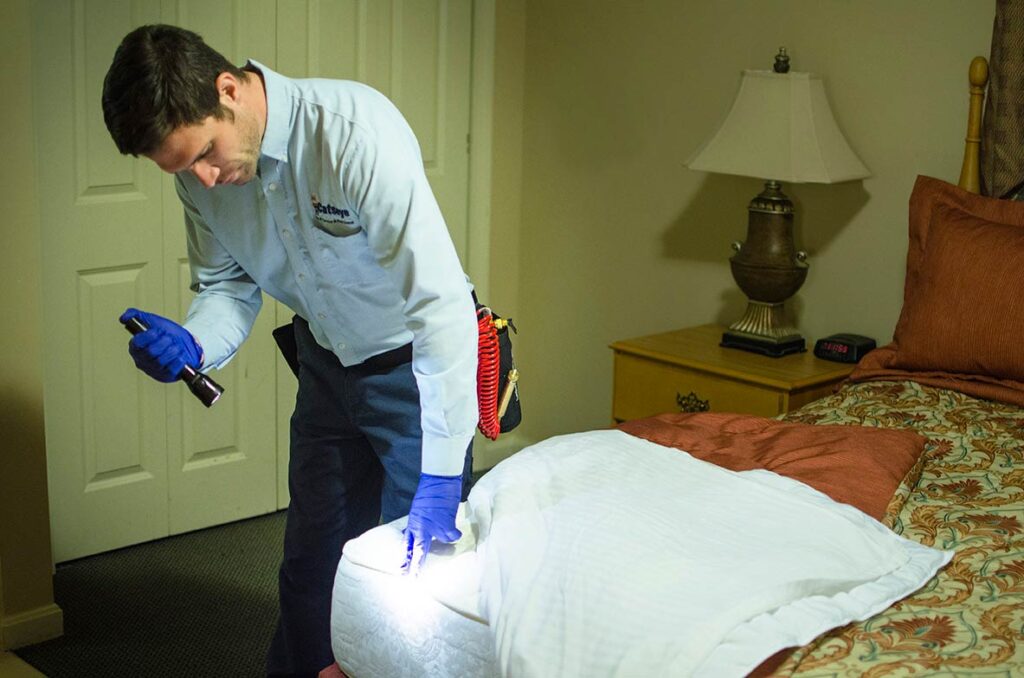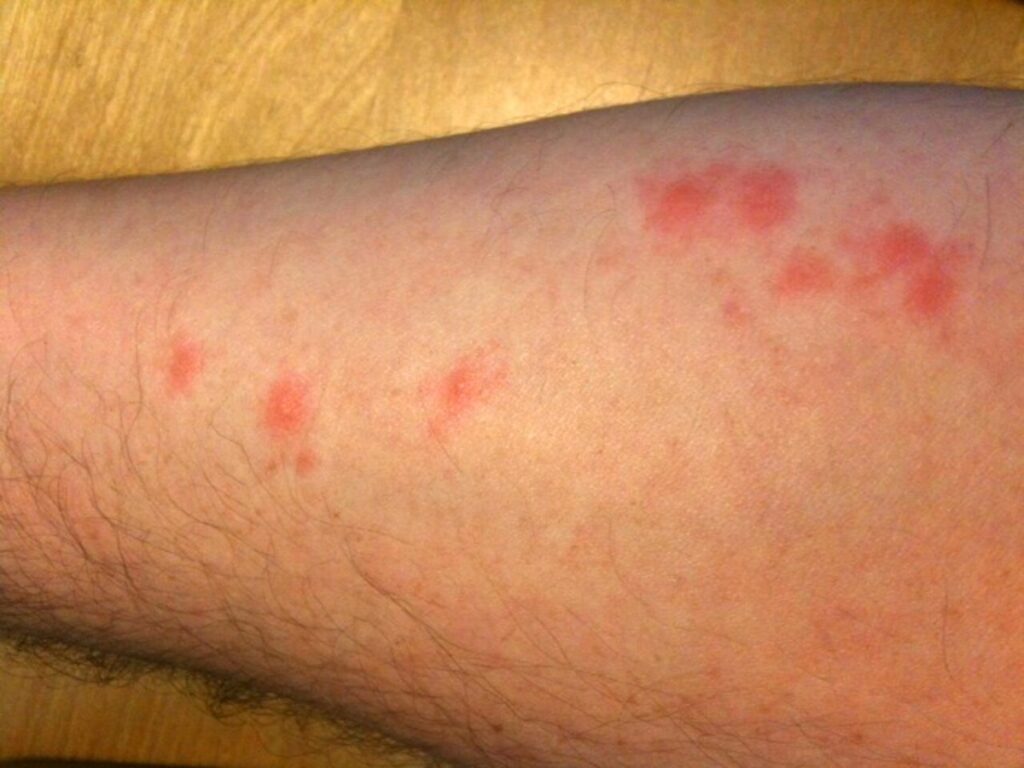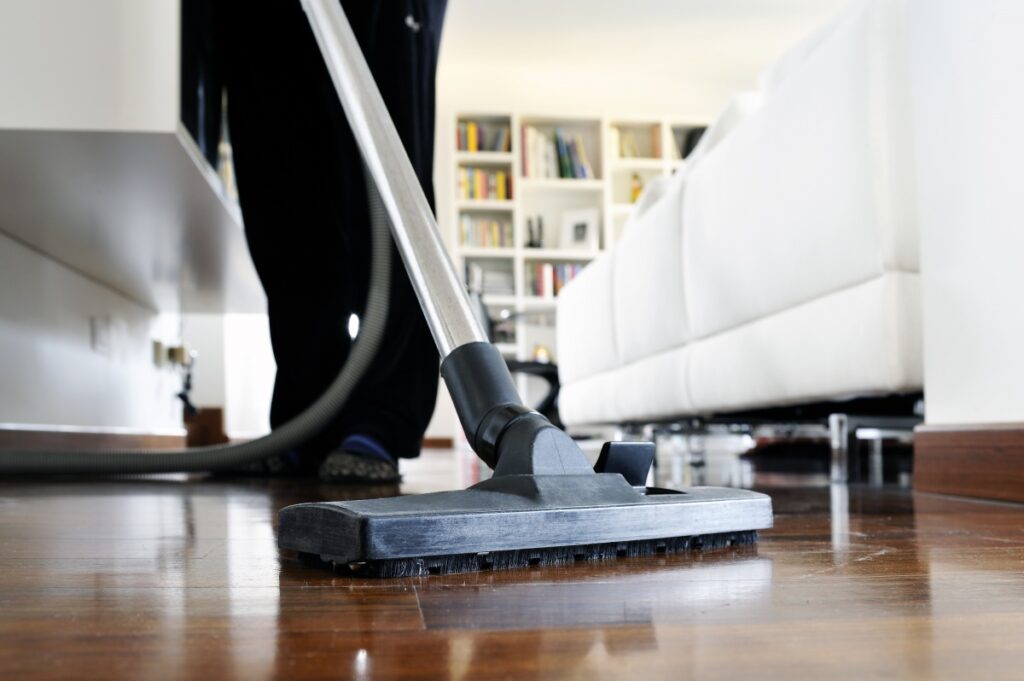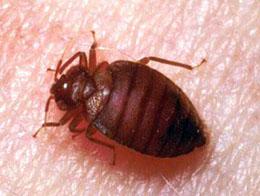Bed Bug Confidential: An Expert Explains How to Defend against the Dreaded Pests
Chances are, you or someone you know has had a run-in with bed bugs. It might have happened in a scrupulously clean bedroom. Or maybe it was a hotel room, office or college dorm. In the February issue of Scientific American entomologist Kenneth Haynes of the University of Kentucky explains how, after a lengthy absence, bed bugs are staging a comeback. The good news is scientists are intensively studying these insects, and their insights suggest novel ways of detecting the bugs and eradicating infestations. Some of those potential solutions are a long way off, however. In the meantime the best bet is to avoid bringing bed bugs home in the first place. I called Haynes to ask him how to do that and what to do if one suspects an infestation (eek!), among a bunch of other practical-minded questions.
Do bed bugs only feed on humans?
No. Bed bugs are also pests in poultry operations, and they’re known to parasitize bats. Some labs that study bed bugs rear them on guinea pigs and mice. The bugs might feed on cats and dogs. Fur is probably a barrier to them, but they could feed at any place on the body without fur. Bed bugs are not specific to humans, but they are adapted to parasitizing us
Could you have a bed bug infestation in your home and not know it?
That’s very possible. I have heard of couples reporting that only one partner is getting bitten. The truth is that both are getting bitten, but only one has a reaction to the bites. Thirty percent of people or more don’t react to bed bug bites at all, and the elderly are less reactive than the rest of the population. Among those people who do react to the bites, most of them don’t respond to early bites, but develop a sensitivity to subsequent ones. Those individuals who are not sensitive to bed bug bites may not know they have an infestation. Because bed bugs are nocturnally active, it’s hard to see other signs of their presence—unless you’re accustomed to waking up at 3 A.M. and taking a census. With a huge infestation, bed bugs start to move away from the bed, so you’re more likely to see one in an exposed place during the day. In very severe infestations people can become anemic. That takes a lot of bugs though—maybe 100,000 feeding once a week or more.
Another clue to infestation is odor. Like many species of bugs, bed bugs release odors called alarm pheromones. When a group of bed bugs gets disturbed, you may get a whiff of that odor, which is similar to the odor stink bugs give off. At higher concentrations the odor is unpleasant. Some people say at low concentrations it’s a pleasant smell—like coriander. In fact, older literature refers to the bed bug as the coriander bug. I’ve tried to smell the coriander scent in bed bug alarm pheromones and have not been able to make the connection, however.
What can one do to avoid getting bed bugs?
The first thing is you have to be able to recognize and distinguish a bed bug from any other insect. Everything starts to look like a bed bug if you start to worry about them. An adult bed bug is about the size and shape of an apple seed. If it has not fed recently it will be flattened and brown. If it has fed it will be round in circumference and reddish. Immature bed bugs have a similar appearance to adults, with the smallest being the size of the head of a pin. You can then learn to look for their fecal spots, which can be easier to detect than the bugs themselves. Check your hotel rooms when you travel. And think twice before bringing home used furniture. If you are purchasing used furniture, ask the furniture store how they deal with bed bugs. If they have no plan whatsoever, that’s probably not a good sign. If you purchase used clothing, put it through a clothes dryer on a medium to high setting for a cycle as soon as you bring it home. And before you move into an apartment, ask the landlord whether there has been a bed bug infestation, or whether the building has ever been treated for bed bugs.

DIY bed bug treatment: myths and facts
Bed bugs can be a huge burden for home and business owners alike. The sheer thought of these blood-sucking insects is enough to keep anyone up all night. These crawling insects can deliver a multitude of aggravating bites that can itch for hours, and can sometimes be particularly troublesome to control.
More often than not people will try a DIY solution using home remedies to control bed bugs before contacting a pest control professional. Here, we dig into which methods that can be effective
Still, if you have noticed any signs of bed bugs, we recommend you reach out to a pest control professional for a real solution to your problem
Home remedies for bed bugs
So, which home remedies for bed bugs actually work? And what can you do to help stop them from spreading? Read on to find out.
Method:
The idea behind this home remedy for bed bugs is to use ultrasonic devices, typically those that you plug into the wall. The high frequencies of the sound waves emitted from the device are believed to be uncomfortable for bed bugs, forcing them to leave the area.

Don’t let the bed bugs bite
Question: If you put on “Off” or some other insect repellant before retiring in a hotel will this prevent them from biting? Can they get in your hair?
Answer: Although we have not specifically tested mosquito repellants on bed bugs, we have tested repellant insecticides. Bed bugs do not seem to respond in the slightest to repellent insecticides. In fact, they will sit on top of them until they die. These results have been confirmed by the older bed bug literature (Usinger 1966) who stated that many repellant materials were applied to bed frames in an attempt to keep bed bugs from crawling up, but none had any effect. Because we have not tested repellants on skin, we can’t say for sure whether bed bugs would be willing to stick their mouth parts though repellant treated skin or not. But we have found bed bugs to be very determined little creatures and I think it would be hard to stop a hungry bed bug. In addition, the repellants that you buy for mosquitoes last only a couple of hours before the effects begin to wear off. If you apply a repellant before getting into bed, a lot of the material could rub off on the sheets etc. Also, bed bugs are most active between 3 and 5 am, which is several hours after the time you would have put the on the repellant to go to bed. Bottom line, a repellant may prevent you from getting a bite or two but I do not believe that they will significantly hinder a hungry bed bug.
Bed bugs can get in your hair but the good news is that they really don’t want to be there. Unlike fleas and lice that have bodies or claws that are specifically designed for navigating through hair, the common bed bug does not have these modifications. In fact, bed bugs need to set their front claws in a particular position so that they can insert their mouthparts into the skin just so, in order to be in the proper feeding position. Hair on the human head would make this very difficult. They would much prefer to feed on the bare skin. If they encountered your head first, they would most likely move to your face (many people suffer face bites) or some other less hairy area to feed. If you are bald, well, the head is fair game.
Question: Would the silk “sleep sacks” sold as a travel accessory be any help at all against bed bug bites at a hotel?
Answer: Unlikely. Bed bugs can very probably feed directly through the weave of the “sleep sack.” Even if the bag were to offer some protection, the bed bugs could crawl to the opening of the sack and enter that way. The best defense is to inspect the bed (mattress and sheets) and the head board for signs of bed bugs. If you find any, report this to the management and request a different room.
Question: When traveling I carry a can of Lysol spray and spray the bed with it. Is this helpful in getting rid of bed bugs?
Answer: The only way that Lysol spray could help you is if you sprayed the bugs directly. The alcohols and propellants would probably kill bed bugs if you wetted them down with the material. However, dried spray on or around the bed would have no effect
If you are traveling, always inspect your mattress for bed bugs by pulling back the covers and looking carefully at the seams and tufts for bed bugs or bed bug evidences (black fecal spots). If you find bed bug, don’t spray them yourself. This may cause them to move around and infest other areas. Instead, contact the hotel management inform them of the bugs and ask for another room immediately. Leave the spraying to a professional.

EASY TIPS TO PREVENT BED BUGS
Learn the Best Ways to Keep Bed Bugs Away With These Expert Tips
Bed bugs present a major problem for households throughout North America. Since bed bugs need a safe, temperate environment to thrive, there are many places inside a home that provide perfect breeding conditions.
There are certain measures that you can take to prevent bed bugs from invading your home, but sometimes—even with the best preparations—bed bugs will still find their way into your house.
Bed bugs are elusive, and they typically hide in narrow cracks and crevices. Basically, anything you can slide a business card into will be an ideal hiding spot for a bed bug. It is also important to remember that bed bugs are not always found in a bed. They will shelter in any place that meets the necessary temperatures they require to live.
Cover Power Outlets
Cover your power outlets – bed bugs use power outlets to evade extermination. They climb into the outlet holes and hide there until it is safe to move elsewhere. In cases of severe infestations, bed bugs can travel through walls via electrical outlets, effectively spreading the infestation to other areas of your home or business
Store Your Clothing in Vacuum-Sealed Bags
This is especially important when traveling, since bed bugs are most commonly transferred from hotels. Purchase standard vacuum-sealed bags and store your clothing in these airtight vacuum bags when traveling. This will make your belongings less accessible to pests, and will prevent bed bugs from making their way home with you. Learn more about how bed bugs travel.

Tips for Preventing the Spread of Bedbugs
In many cases, bedbug problems start when they “hitch‐hike” in our luggage or other items during trips and stays at hotels and rental properties or if our jobs take us into potentially infested dwellings. Here are some tips on what you should do if you know or suspect that you picked up some bedbugs during a trip.
Know the Signs of Bedbugs
Bedbug bites are somewhat similar in appearance to mosquito bites, but many people do not react to the bites. For that reason, bites (or bite-like marks) or rashes are not reliable signs of a bedbug problem. Look for actual bedbugs and their fecal smears. Bedbugs are reddish‐brown, oval, flattened insects from 1⁄4 – 1⁄3 inch long and 1⁄16 – 1⁄8 inch wide before feeding (Figure 1). After a blood‐meal, they are swollen and dull red.
Bedbugs can be difficult to spot on furniture, luggage, backpacks, etc. particularly if the items are dark in color. They like to hide in crevices no thicker than a credit card. Their oval white eggs are only 1⁄25 inch and even more difficult to spot. Figure 2 shows a bedbug and dark‐colored fecal smears on the seams of a mattress. For more information about identifying bedbugs, see Bedbugs – Biology and Management.
What Can You Do to Reduce the Likelihood of Picking up “Hitchhiking” Bedbugs?
Skip to What Can You Do to Reduce the Likelihood of Picking up “Hitchhiking” Bedbugs?
Carry some plastic trash bags in your luggage. You can also enclose your clothing and other items in trash bags inside your luggage.
Don’t place luggage on beds or on the floor near beds. Some hotels have fold‐out luggage stands. These stands are not “bedbug proof” but you can check them for signs of bedbugs particularly where the webbing wraps around the frame. You can store luggage in a trash bag (preferably a white or light-colored trash bag so you can spot any hitch-hikers on the bag). Another option is to keep your luggage in bathtub.
For work-related home visits, minimize what you bring into the home. Place items on a hard surface, such as a table, rather than on a couch, chair or the floor next to furniture.
Avoid spraying pesticides in your hotel / vacation room. Remember, you are not the only guest who has used (or will use) the room and many people are sensitive to pesticides. The management of your guest accommodation likely has a pest control program in place and any spraying you may do can be both hazardous and actually disruptive to their pest control efforts.
If your job takes you into potentially-infested homes, be careful about spraying repellents on your clothing. Know your client. Although you may not be sensitive to pesticides, the residents of homes that you visit may have a reaction to the chemical including an asthmatic event.
If you’re staying at a hotel or vacation rental property, pull back the covers and sheets inspect their mattress & box spring for signs of activity. You can do the same thing at home periodically to make sure you haven’t missed something. Remember that spotting on a mattress or box spring does not necessarily mean that it’s bedbug feces OR that there is a current bedbug problem. Many places are now using mattress encasements. Do not open the encasement because it may be difficult to reseal and so compromise its effectiveness.